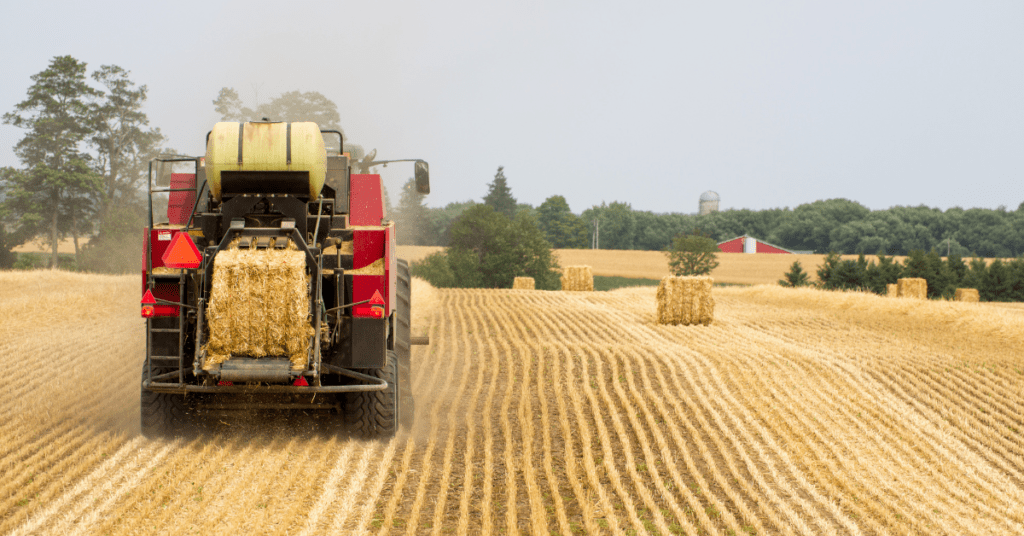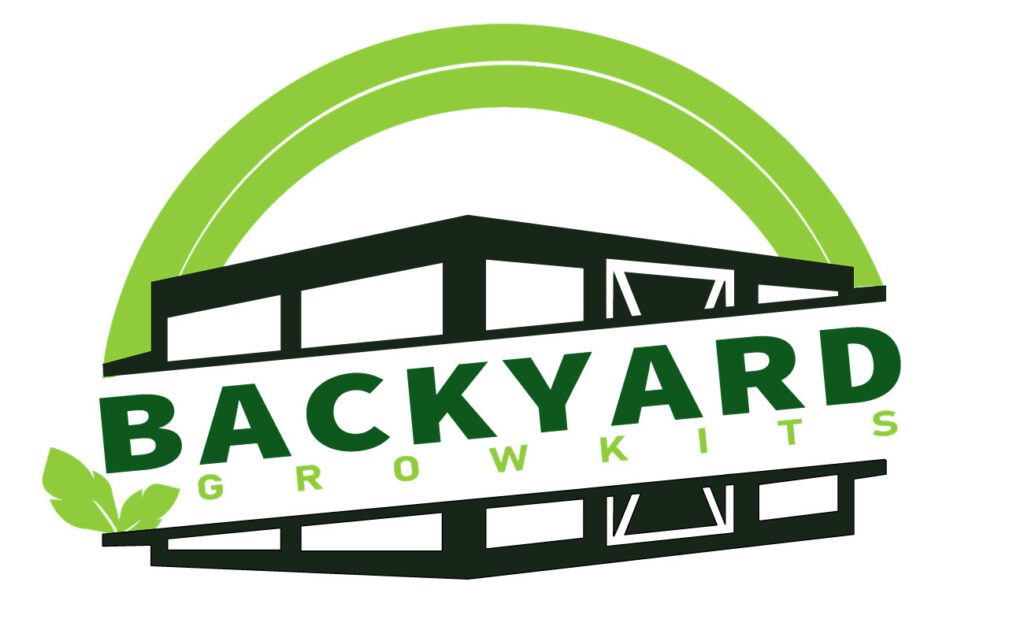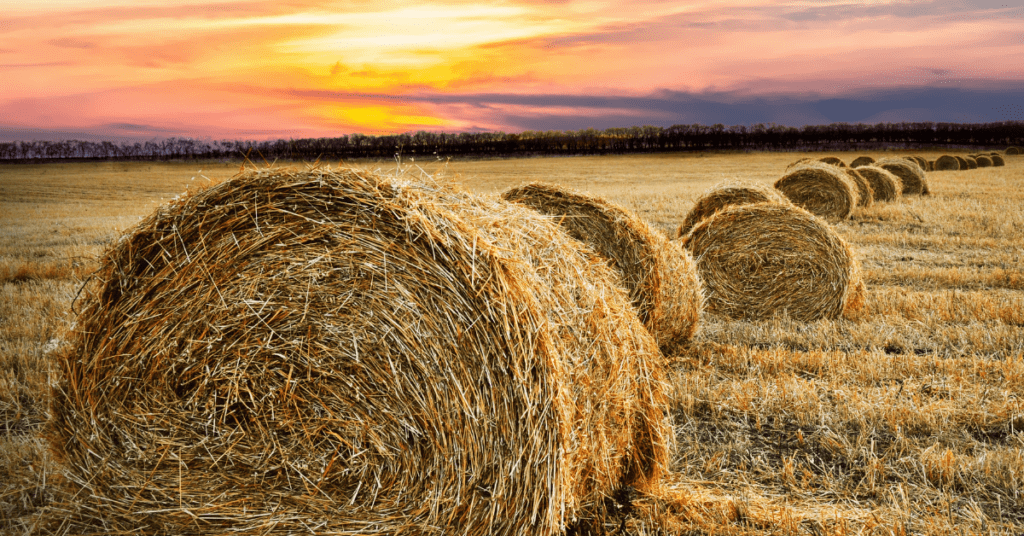As someone passionate about gardening, I have tried various techniques over the years.
One method that has stood out to me is straw bale gardening. It’s a unique, sustainable way to grow plants that can be done almost anywhere, even in small spaces.
I’ll take you through everything you need about straw bale gardening, from choosing suitable bales to harvesting your crops.
What is Straw Bale Gardening?
Straw bale gardening is a technique where plants are grown in straw bales instead of soil.
It’s an excellent option for people who don’t have access to a traditional garden or want to grow plants more sustainably.
Straw bale gardens can be set up on any surface, including concrete, making them perfect for urban dwellers.
The process of straw bale gardening starts with conditioning the bales, which involves breaking down the straw and adding nutrients to create a fertile environment for plants.
Once the bales are conditioned, you can plant your desired crops directly. As the plants grow, their roots penetrate the bale and access nutrients.
Benefits of Straw Bale Gardening
There are several benefits to straw bale gardening:
First, it’s a great way to grow plants if you don’t have access to a traditional garden. You can set up a straw bale garden on a balcony, patio, or rooftop.
Straw bales are biodegradable, which means they won’t contribute to landfill waste when you’re done with them.
Straw bale gardening can be more sustainable than traditional gardening because it requires less water or fertilizers.
How to Choose the Right Straw Bales

When choosing straw bales for gardening, selecting bales free from pesticides and herbicides is essential.
You can find straw bales at most gardening stores but read the label carefully to ensure they’re safe.
Additionally, you’ll want to choose bales that are tightly packed and don’t have any signs of mold or rot.
Preparing the Straw Bales for Planting
Before planting in your straw bales, you’ll need to condition them. Conditioning the bales involves adding water and fertilizer to break down the straw and create a fertile plant environment.
Here are the steps to prepare straw bales for planting:
- First, choose straw bales that are in good condition, free from mold, and have tightly packed straws.
- Position the bales in a sunny area, ideally where they will receive at least 6-8 hours of sunlight daily.
- Water the bales thoroughly, saturating them completely, and continue to water them daily for several days.
- On the third day, add a nitrogen-rich fertilizer to the bales, such as blood meal or fish emulsion, to help activate the decomposition process.
- Water the bales daily for another 5-7 days, ensuring they are completely saturated.
- After a week of watering and fertilizing, take a soil test to check the pH levels of the bales. Ideally, the pH should be between 6.0 and 6.5. Adjust the pH as needed by adding lime or sulfur.
- Once the pH is adjusted, add a balanced fertilizer to the bales and let them rest for a few days before planting.
- When you’re ready to plant, create a hole in the top of the bale and add potting soil or compost to create a planting pocket. Then, plant your seedlings or seeds as you would in a traditional garden bed.
- Water the bales daily, ensuring the water reaches the roots of the plants. Then, as the straw decomposes, it will provide nutrients to your plants.
Planting in Straw Bales

Once your straw bales are conditioned, you can start planting in them. To grow in a straw bale, create a hole and add soil or compost.
Then, plant your seedlings as you would in a traditional garden. You can plant various crops in straw bales, including tomatoes, peppers, lettuce, and herbs.
Watering and Fertilizing Your Straw Bale Garden
Straw bale gardens require regular watering to keep the plants healthy. The straw bales will absorb water quickly, so you’ll need to water them more often than you would a traditional garden.
Additionally, you’ll want to fertilize your straw bale garden regularly to ensure the plants have access to the nutrients they need.
You can use organic fertilizers, such as compost tea or fish emulsion, to keep your plants healthy.
Common Mistakes to Avoid in Straw Bale Gardening
There are a few common mistakes that people make when starting a straw bale garden:
Firstly, they may not condition the bales properly, which can lead to poor plant growth.
Additionally, they may not water the bales enough, which can cause the plants to dry out.
Finally, they may not choose suitable crops for their straw bale garden, which can lead to poor yields.
Harvesting Your Straw Bale Garden
When it comes time to harvest your crops, you can do so just like in a traditional garden.
Pick your fruits and vegetables when they’re ripe and ready to be eaten.
One benefit of straw bale gardening is that the bales will start to break down over time, which means you can use them as mulch for your next crop.
Maintaining Your Straw Bale Garden

To maintain your straw bale garden, you’ll want to keep an eye on the moisture levels in the bales.
Additionally, you’ll want to remove any dead or diseased plants to prevent the spread of disease.
Finally, you can continue fertilizing your straw bale garden throughout the growing season to keep the plants healthy.
Tips for Success in Straw Bale Gardening
Choosing suitable crops for your environment is essential to ensure success with your straw bale garden.
Additionally, you’ll want to condition the bales properly and water them regularly.
Finally, you can add organic fertilizers to keep the plants healthy and productive.
Frequently Asked Questions About Straw Bale Gardening
What can I grow in a straw bale garden?
You can grow various crops in a straw bale garden, including tomatoes, peppers, lettuce, and herbs.
How often should I water my straw bale garden?
Straw bale gardens require regular watering to keep the plants healthy. You’lTherefore, you’ll water them more often than you would a traditional garden.
How long do straw bale gardens last?
Straw bale gardens can last for one to two growing seasons, depending on how well they’re maintained.
Conclusion on Straw Bale Gardening
Straw bale gardening is a unique, sustainable way to grow plants that can be done almost anywhere.
Remember to condition your bales properly, choose suitable crops, and water and fertilize your plants regularly for the best results.
You can enjoy a bountiful harvest in your straw bale garden with a little effort.

